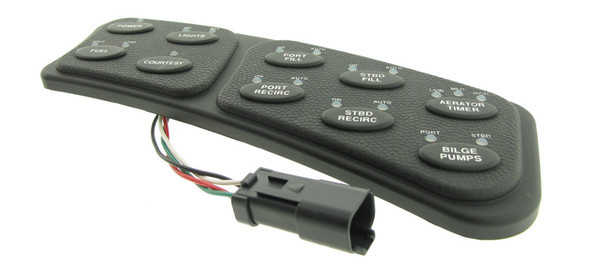In order for Epec or any PCB fabrication company to quote your circuit boards accurately and with minimum delays, it's important to supply a complete PCB data file set, using industry-standard file types. Before you look at getting your quote, learn what information you need to supply to ensure a smooth PCB fabrication process.
Cable pre-molding, sometimes associated with potting or encapsulation, is used to protect the termination points from the surrounding environment. Pre-molding involves the application of a material around the back section of a connector where the termination points are located.
Wave soldering, the process of attaching electronic components to the printed circuit board (PCB), becomes increasingly difficult as pitch decreases. Pitch is the center-to-center spacing between the conductors on a PCB. So, knowing that wave soldering becomes harder with lower pitch measurements, what is the minimum pitch distance you should maintain on circuit boards? With the appropriate controls, it is still possible to get a good result with pitches as low as 0.5mm (.0197"). Wave soldering defects can occur in pitches below 0.5mm, so we recommend this as the minimum pitch to wave solder a PCB.
The copper weight and corresponding thickness used in a flexible circuit board need to be carefully selected in order to meet both the electrical and mechanical bend requirements of specific flex circuit design. Copper weight for a flex PCB is both the stiffest and most critical component.
When a blow hole defect occurs during the assembly process as a result of the PCB card, the primary culprit tends to be entrapped moisture or air. With moisture, any non-plated and non-masked areas on a bare circuit board that expose internal laminate can be suspect to absorbing moisture. Absorption can occur either during the board fabrication process or from improper storage. Examples of highly suspect areas include non-plated drilled holes and routed features.
When it comes to printed circuit board manufacturing, there are a variety of PCB via process requirements to consider. Each has their own pros, cons, and cost adders so knowing these requirements can aid you when designing your circuit boards. In this post we will discuss the differences for why you would either fill or plug a circuit board via.
The major difference between a stranded cable and solid cable is the flexibility. Within this post we will define cable flexibility with regard to ability to withstand continuous movement. Depending on your application, cable flexibility can be a factor when choosing the proper components for your cable assembly or wire harness.
The need to protect your keypad from the ever-present threat of wear-and-tear is crucial for all applications. If your control panel is going to be used in marine environments, medical devices, or other consumer electronics, the threat of water or liquid exposure is ever present. In wet situations, it is critical that all electronic components are completely sealed off from any outside substances that could damage the device.
It is not recommended to bake boards with an organic solderability preserve (OSP) surface finish. Although baking a printed circuit board with an organic solderability preserve finish can have negative consequences, the process itself can have positive performance in specific applications. OSP is a very thin protective layer of material placed over exposed copper, typically using a conveyorized process to protect the copper from tarnish.
The shelf life of a rechargeable nickel metal hydride (NiMH) battery will vary depending on the storage temperature and the size of any attached load. The battery shelf life will also vary by manufacturer. Panasonic recommends the following for their NiMH battery cells.























